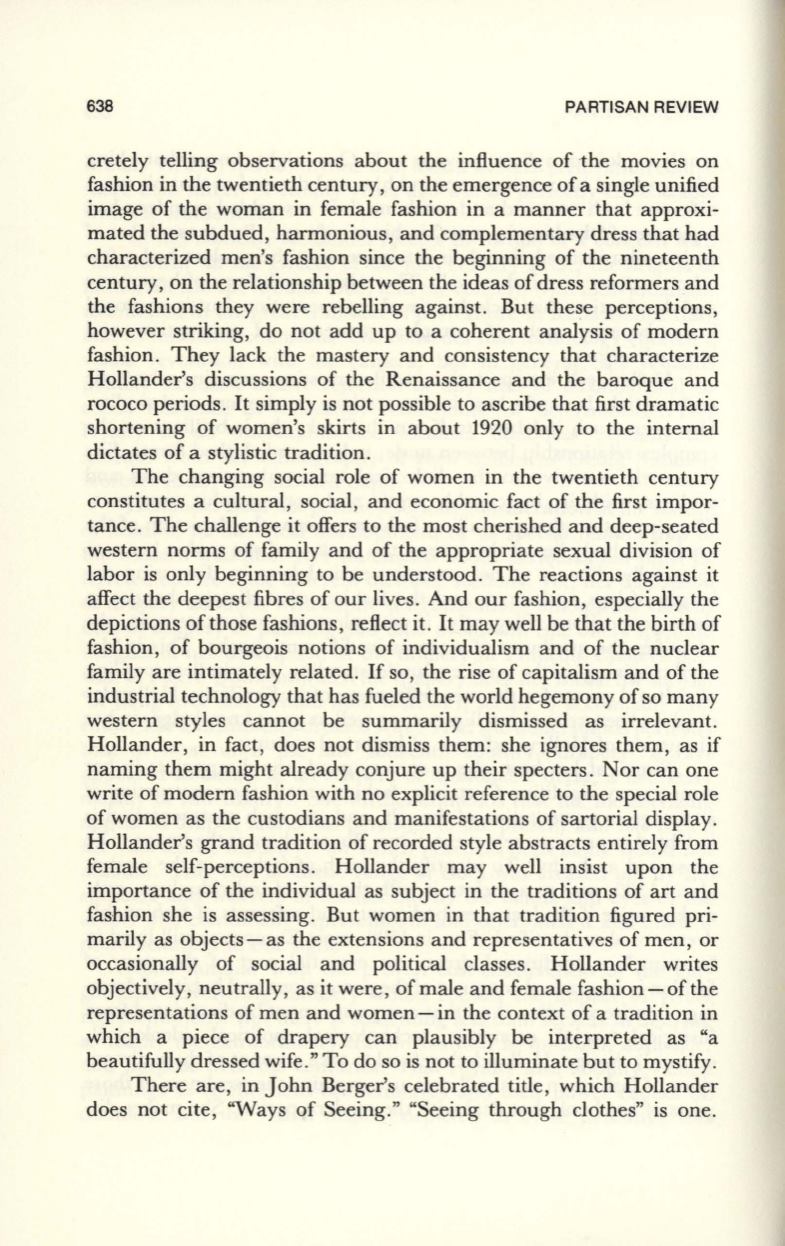
638
PARTISAN REVIEW
cretely telling observations about the influence of the movies on
fashion in the twentieth century, on the emergence of a single unified
image of the woman in female fashion in a manner that approxi–
mated the subdued, harmonious, and complementary dress that had
characterized men's fashion since the beginning of the nineteenth
century, on the relationship between the ideas of dress reformers and
the fashions they were rebelling against. But these perceptions,
however striking, do not add up to a coherent analysis of modern
fashion . They lack the mastery and consistency that characterize
Hollander's discussions of the Renaissance and the baroque and
rococo periods.
It
simply is not possible to ascribe that first dramatic
shortening of women's skirts in about 1920 only to the internal
dictates of a stylistic tradition.
The changing social role of women in the twentieth century
constitutes a cultural, social, and economic fact of the first impor–
tance. The challenge it offers to the most cherished and deep-seated
western norms of family and of the appropriate sexual division of
labor is only beginning to be understood. The reactions against it
affect the deepest fibres of our lives . And our fashion, especially the
depictions of those fashions, reflect it. It may well be that the birth of
fashion , of bourgeois notions of individualism and of the nuclear
family are intimately related .
If
so, the rise of capitalism and of the
industrial technology that has fueled the world hegemony of so many
western styles cannot be summarily dismissed as irrelevant.
Hollander, in fact, does not dismiss them: she ignores them, as if
naming them might already conjure up their specters. Nor can one
write of modern fashion with no explicit reference to the special role
of women as the custodians and manifestations of sartorial display .
Hollander's grand tradition of recorded style abstracts entirely from
female self-perceptions . Hollander may well insist upon the
importance of the individual as subject in the traditions of art and
fashion she is assessing. But women in that tradition figured pri–
marily as objects-as the extensions and representatives of men, or
occasionally of social and political classes . Hollander writes
objectively, neutrally, as it were, of male and female fashion-of the
representations of men and women - in the context of a tradition in
which a piece of drapery can plausibly be interpreted as "a
beautifully dressed wife ." To do so is not to illuminate but to mystify.
There are, in John Berger's celebrated title , which Hollander
does not cite, "Ways of Seeing." "Seeing through clothes" is one.


